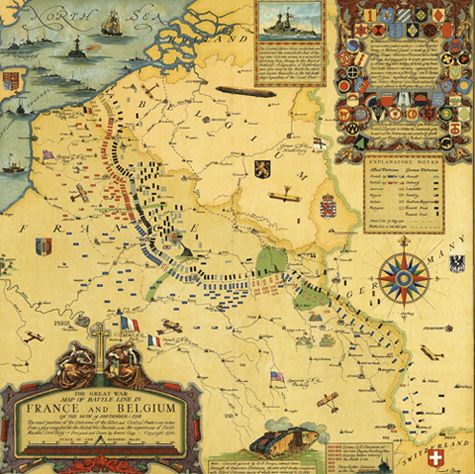Sign up for the Family Tree Newsletter Plus, you’ll receive our 10 Essential Genealogy Research Forms PDF as a special thank you!
Get Your Free Genealogy Forms
"*" indicates required fields
World War I is known as the “War to End All Wars” with good reason. Its death and destruction were unprecedented, and more than 16 million people died during the four-year conflict. Combatants from across the world—including some of your ancestors from the United States—braved horror after horror. WWI servicemen had to combat “trench foot,” mustard gas, Spanish influenza and deadly new semi-automatic weaponry.
If you have ancestors who fought in the Great War, you might look for wartime maps. The map above (from the David Rumsey Map Collection) shows the Western Front during the war’s final months, including the Hundred Days Offensive. Seeking a speedy end to a war notable for its months of stalemate, Allied commanders launched a series of successful attacks on the German front (called the Hindenburg Line). Their assault between August and November of 1918 forced an armistice on November 11 of that year. As you can see, the detailed colorful map shows the state of the war in September 1918. The map indicates divisions from different countries using colored boxes, with the French in blue (infantry solid blue, cavalry blue and white) and British in red (cavalry solid red, cavalry red and white). American divisions are indicated by red-and-white striped boxes, while German divisions are indicated by various black and grey boxes. Additional markings on the map indicate battle lines in July and November.
The map is also notable for its account of American accomplishments in the war in the top right, including symbols for each of the 42 divisions that were deployed. For even deeper research, you can use maps like this one in conjunction with WWI service and pension records. These might clue you in to what regiment your ancestor served in and where/when he may have fought.
ADVERTISEMENT





